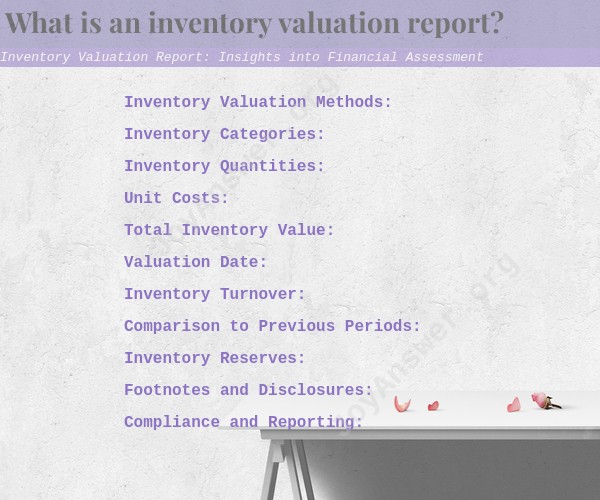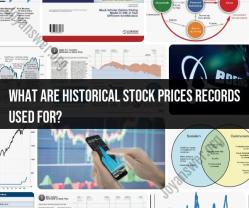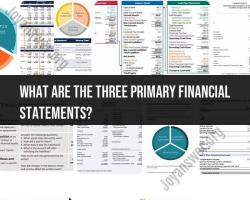What is an inventory valuation report?
An inventory valuation report is a financial document that provides detailed information about the value of a company's inventory at a specific point in time or over a defined period. This report is a crucial component of a company's financial assessment and is used for various purposes, including financial reporting, tax compliance, and decision-making. Here are key insights into what an inventory valuation report typically includes:
Inventory Valuation Methods: The report often specifies the inventory valuation method used. Common methods include First-In-First-Out (FIFO), Last-In-First-Out (LIFO), Weighted Average Cost, and Specific Identification. The chosen method affects how the inventory is valued.
Inventory Categories: Inventory may be categorized into different types, such as raw materials, work-in-progress, and finished goods. The report may provide a breakdown of the value of each category.
Inventory Quantities: It includes the quantities of each type of inventory on hand, typically measured in units, cases, or other relevant units of measure.
Unit Costs: The report lists the cost per unit for each item in inventory, based on the chosen valuation method. This cost may vary over time as new inventory is acquired.
Total Inventory Value: The report calculates the total value of the inventory by multiplying the quantity of each item by its unit cost and summing these values.
Valuation Date: The date as of which the inventory is valued is clearly stated. This can be the end of a financial reporting period or another specific date for inventory assessment.
Inventory Turnover: Some reports include calculations related to inventory turnover, which measures how quickly a company's inventory is sold and replaced. High turnover rates indicate efficient inventory management.
Comparison to Previous Periods: In financial analysis, it's common to compare the current inventory valuation to previous periods to track trends and changes. This helps in assessing the impact of sales, purchases, and fluctuations in inventory costs.
Inventory Reserves: The report may account for inventory reserves, such as obsolescence or shrinkage allowances, which reduce the reported inventory value to reflect potential losses.
Footnotes and Disclosures: To provide clarity and transparency, the report may include footnotes or disclosures explaining the valuation method used, any unusual inventory events, or accounting policies related to inventory.
Compliance and Reporting: The inventory valuation report is essential for complying with financial reporting standards (e.g., Generally Accepted Accounting Principles or International Financial Reporting Standards) and may be required for external financial audits and tax reporting.
Management Decisions: The report is a valuable tool for management decision-making. It helps in determining reorder points, identifying slow-moving or obsolete inventory, and optimizing inventory levels to improve cash flow.
Overall, an inventory valuation report is a critical financial document that provides insights into a company's financial health, management of inventory assets, and compliance with accounting standards. It is used by stakeholders, including management, investors, auditors, and tax authorities, to assess the financial position and performance of a business.












